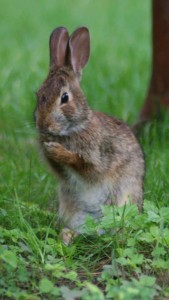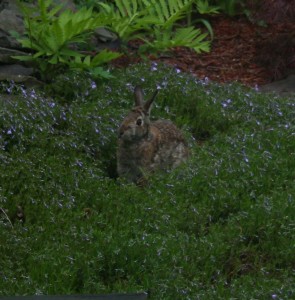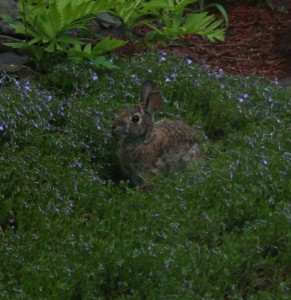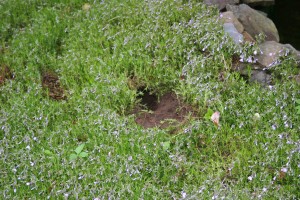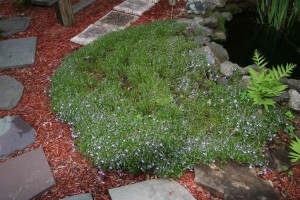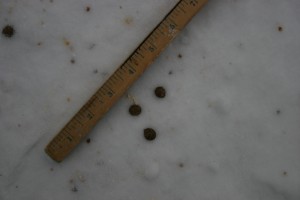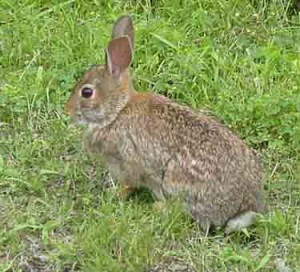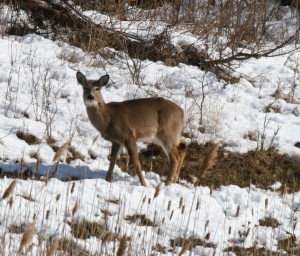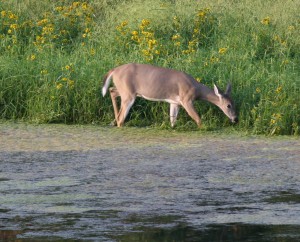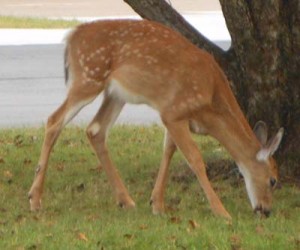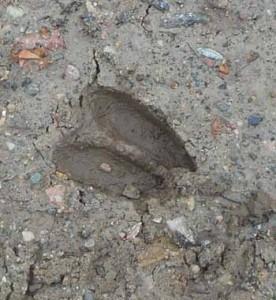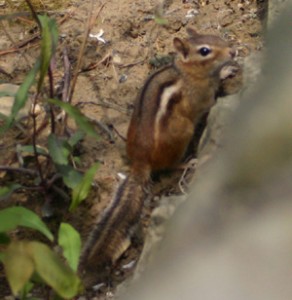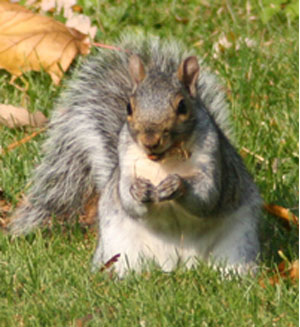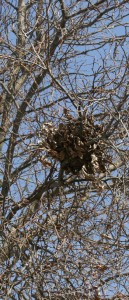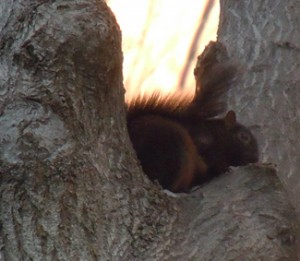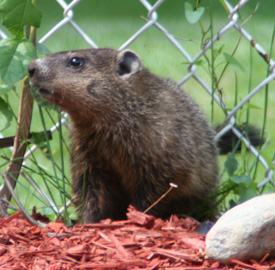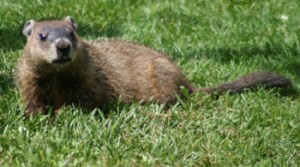General: The scientific name of the coyote is Canis latrans which means “barking dog”. If you have ever been out in the woods while coyotes were present and heard their high-pitched howls, yips, yelps, and barks, you will understand the nature of their name.
The coyote is one of the animals that were been able to enlarge their range and thrive due to human population growth. It originally ranged primarily in the western half of North America and they were preyed on by wolves and mountain lions. In fact wolves have kept coyote populations in check. Many studies conducted by researchers have concluded that the introduction of wolves in Yellowstone Park reduced the coyote population. With the absence of apex predators coyotes have been able to expand their range throughout the entire contiguous 48 states and Canada.
Without natural control, wolves etc., coyote populations and densities rarely are reduced or even controllable by humans through hunting and trapping. In fact, studies have shown an increase in reproductive rates in areas where coyotes were intensively removed – females may even come into heat twice a year in such conditions. And, unlike wolves, the really is no alpha male and female coyote, most female coyotes will mate. It has been estimated that over 65% of a coyote population (adults and young) would have to be removed annually to overcome their reproductive potential and lead to an overall population decline.
Coyotes become sexually mature usually the first breeding season; however, the proportion of juvenile animals (less than 1 year old) participating in breeding depends on environmental conditions, food availability, and population density. In general, 60% – 80% of adults and 20% – 25% of juvenile females breed and bear young each year (Parker 1995). Non-breeding females tend to be individuals that do not hold a territory. (3)
Common names of coyote groups are a band, a pack, or a rout. The group is many times a ‘family unit’. Each family unit is made up of the adult pair and their pups from the current year. A family unit will defend a territory of 6 to 15 square miles against other coyotes.
A study by the Genome Research Project has identified that as coyotes have moved into new areas they have acquired DNA of both domestic dogs and wolves. The chart below summarizes these findings.
| Coyote | Dog | Wolf | Total | |
| Western Coyote |
100% |
0 |
0 |
100% |
| Northeastern Coyote |
84% |
8% |
8% |
100% |
| Midwestern Coyote |
85% |
13% |
2% |
100% |
| Southeastern Coyote |
93% |
2% |
5% |
100% |
1. Northeastern population location as name indicates are the New England states including eastern New York
Eastern coyote genetics and skull morphology shows that remnant wolf populations in Canada hybridized with coyotes expanding north of the Great Lakes, thereby contributing to the evolution of coyotes from mousers of western grasslands to deer hunters of eastern forests. The resulting coy-wolf hybrids are larger, with wider skulls that are better adapted for hunting deer. (1)
A study showed that of 100 coyotes collected in Maine, 22 had half or more wolf DNA and one was 89% wolf. The large eastern coyotes in Canada are proposed to be actually hybrids of the smaller western coyotes and wolves that met and mated decades ago, as the coyotes moved toward New England from their earlier western ranges. (2)
2. Midwestern population Ohio south into Mid-Atlantic out to the Mississippi boundary
3. Southern population below Mid-Atlantic to Florida out to the Mississippi boundary
4. Western population west of Mississippi River
As the chart show, coyotes and dogs can interbreed. The offspring are referred to as ‘coydog’. The problem has been the offspring have a reproductive cycle of dogs, not coyotes, and will give birth at times of the year (January) when the pups cannot possibly survive in northern climate. With that said, domestic dog DNA is present in much of the coyote population.
Interesting Facts:
During pursuit, a coyote may reach speeds up to 43 mph and can jump a distance of over 13 ft
Coyotes have been known to live a maximum of 10 years in the wild and 18 years in captivity
Litter size ranges from one to 19 pups; the average is six.
Identification: Coyotes typically grow to 40” – 50” in length – including the tail which measures about 10” – 16” and stand about 20” – 26” at the shoulder. Depending on region, coyotes can weigh from 15 lbs. – 50 + lbs.
Fur Color is variable and can be blonde or reddish blonde to dark tan washed with black. Coyote legs, ears and cheeks usually reddish in color. Black patches on base and tip of tail help distinguish from dogs
Habitat: Territory: found throughout North and Central America, ranging from Panama in the south, north through Mexico, the United States and Canada. It occurs as far north as Alaska and all but the northernmost portions of Canada.
Diet: Coyotes are opportunistic omnivores which is part of their success resulting in increased range and population. They will eat anything. In the wild they prey on small indigenous animals depending on the season. They primarily eat small animals such as mice, squirrels, prairie dogs, rabbits, ground squirrels, birds, snakes, lizards, insects, fish, deer, domestic livestock, trash and the family pet. They will consume large amounts of carrion. Fruits and vegetables are a significant part of the coyote’s diet.
Acting as a pack coyotes have taken down deer, large domestic dogs and should be considered dangerous to humans.
Attacks on humans: Coyote attacks on humans are uncommon but they do occur. Data from USDA Wildlife Services, the California Department of Fish & Game, and other sources show that while 41 attacks occurred during the period of 1988–1997 and 48 attacks were verified from 1998 through 2003. There are only two recorded fatalities in North America from coyote attacks.
1 http://www.nysm.nysed.gov/press/2009/coauthors.cfm
2 IF&W in collaboration with Paul Wilson, Trent University
3 THE STATUS AND IMPACT OF EASTERN COYOTES IN NORTHERN NEW YORK

